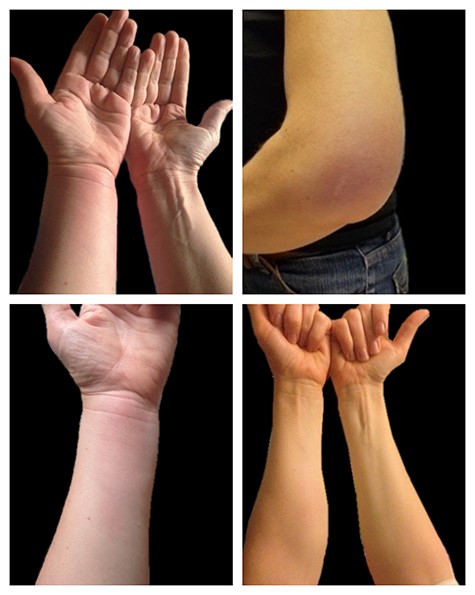-
PDF
- Split View
-
Views
-
Cite
Cite
O Itani, G Monsel, M Mrad, T Ruf, L Paris, E Caumes, Gnathostomiasis in a traveller returning from Madagascar, Journal of Travel Medicine, Volume 28, Issue 6, August 2021, taab039, https://doi.org/10.1093/jtm/taab039
Close - Share Icon Share
Case report
A 38-year-old Latvian female with no previous medical history presented to our clinic in Paris, France, in December 2020, with a 3-year history of intermittent migratory swellings of the left upper limb. Two years prior the onset of symptoms, she had travelled to Madagascar for a 3-month humanitarian mission. She was mostly based in Mahajanga, but she roughly visited the whole island. She ate local food including seafood and fish which were always well-cooked, but she also reported eating an insufficiently cooked frog that she had caught in a freshwater stream. She had no other history of travel in Sub-Saharan Africa, Asia or South America. The symptoms being intermittent, there were no abnormal findings on physical examination. Photos taken by the patient showed localized erythematous swellings of the left upper limb (arm, elbow, forearm and wrist), consistent with panniculitis (Photo 1). Episodes recurred every 3–4 months and lasted for 2–4 weeks. She reported no pruritis or pain, no fever or other symptom. Blood count was within normal range, including eosinophils. Filariasis serology was positive by enzyme-linked immunosorbent assay (Acanthocheilonema vitae, Bordier Affinity Products, Crissier, Switzerland) but was not confirmed by immuno-electrophoresis (in-house method, antigene Ascaris suum), and testing for peripheral blood microfilariae was negative. Serologic testing for gnathostomiasis by immunoblot, performed at the Swiss Tropical and Public Health Institute, was positive. The patient was treated with ivermectin, 0.2 mg/kg, for two consecutive days. Follow-up is ongoing without any relapse up to now.

Four different episodes of localized erythematous swellings of the upper left limb.
Gnathostomiasis is a parasitic zoonosis acquired after consumption of raw or undercooked freshwater fish, shellfish, frogs, reptiles or birds containing third-stage larvae of the nematode Gnathostoma (mainly, Gnathostoma spinigerum and Gnathostoma hispidum). Its eggs develop in freshwater and release first-stage larvae that are ingested by copepods, the first intermediate host, which in turn are consumed by a broad range of aquatic second intermediate hosts (fish, eels and frogs). The latter are sometimes ingested by paratenic hosts (birds and snakes). Gnathostomiasis is generally caused by one single larvae, and as little as a bite of the infected host can be enough to trigger the disease. It is known to be endemic in Southeast Asia, India, Central and South America, with recent cases being reported in Zambia, Botswana and South Africa. The classic triad of intermittent migratory swellings usually affecting the trunk or limbs, eosinophilia and a history of travel to an endemic area is highly suggestive of the diagnosis.1 Other less common manifestations include creeping eruption, nodules or visceral involvement.2 Diagnosis is rarely confirmed by the isolation of the larvae from the lesions. Serology with immunoblot is a reliable diagnostic tool. Effective treatments are albendazole (400 mg twice a day for 21 days) or ivermectine (0.2 mg/kg for one or two consecutive days), and these must be given regardless of the infection timeline in order to prevent serious complications (ocular and cerebral). Relapses are frequent, mostly after treatment with albendazole.3 Eosinophilia can be a useful signal for recurrences, even if absent initially.
In our case, the infection was confirmed 5 years after the patient’s travel to a non-endemic area, and this long timeframe is not unusual. This is the second reported case of gnathostomiasis acquired in Madagascar and this should alert clinicians of the emerging risk in southern Africa.4
Funding
There is no funding to report for this submission.
Conflict of interest
None declared.
Authors’ contributions
O.I., G.M., M.M., L.P. and E.C. managed the patient’s case. T.R. performed the serological test. O.I. and E.C. drafted the manuscript.



